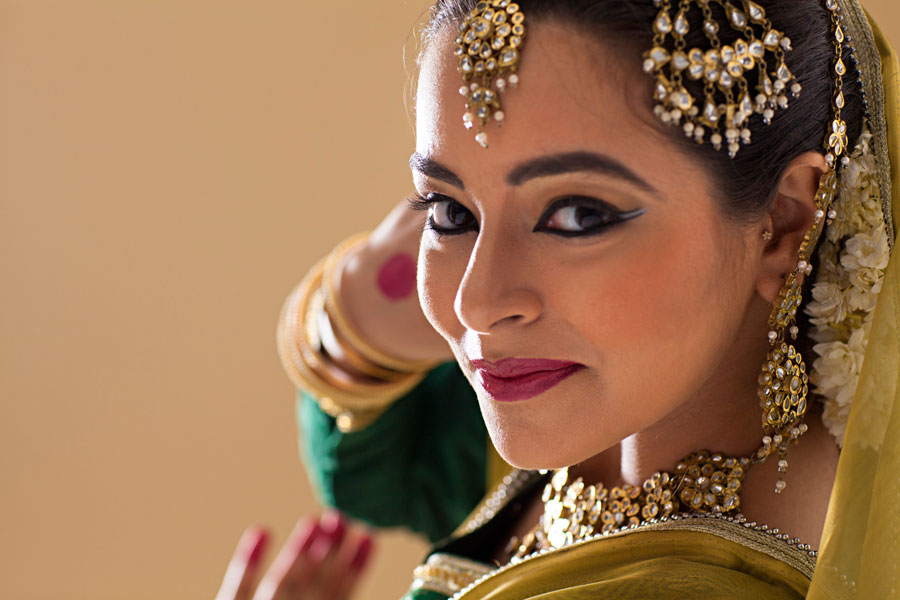
Formal Examinations
There are nine levels of exams offered conducted by indian classical dance centres like Hindustan Art and Music Centre and Gandharya Vidyalay, Akhil Bhartiya
Prarambhik (First Year)
Practical : 40, Theory :10, Passing : 17
Theory: Definition of Laya, Vilambit Laya, Madhya Laya, Druta Laya, Matra (beat), Sum, Tali and Khali and Taal “Teentaal”
Practical:
- Five Tatkaars in Taal Teentaal and double speed of it.
- Ten Todas and four Chakradhar Toda’s in Tal Teentaal
- Vocal demonstration of Taal using hands and it’s double and four times of its speed
- Any two modern dances
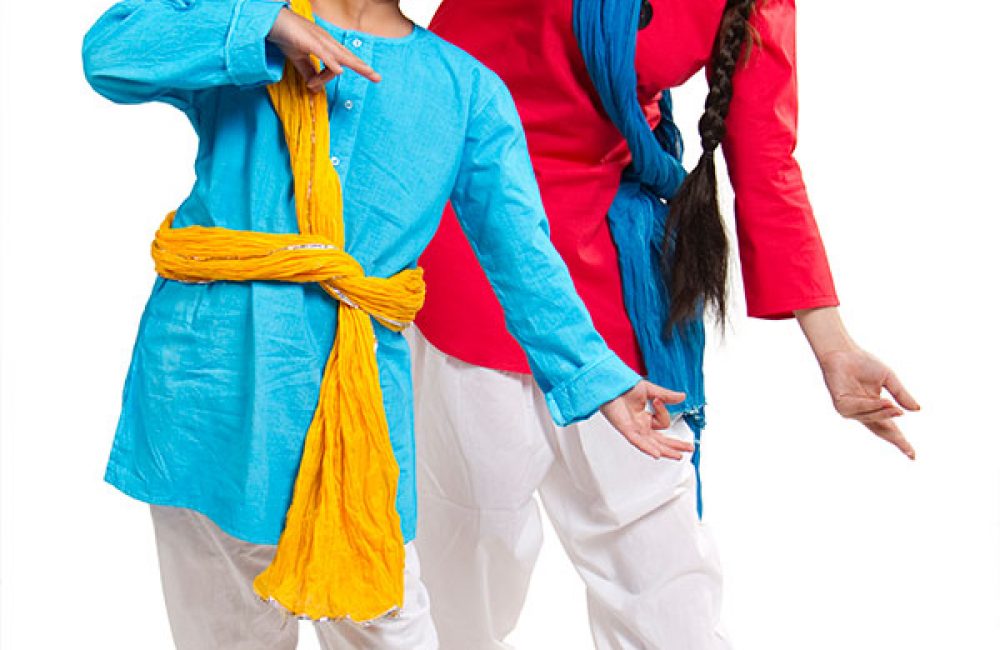

Praveshika Pratham (Second Year)
Practical : 60, Theory: 15, Passing : 25
Theory:
- Knowledge and definition of following terms such as Laya (slow, medium and fast), Sum, Matra, Tali, Khali, Gatnikas, Tatkar, Toda, Gatpatta, Thaat, Salami (Rangmanch Pranam), Baat and Tukada
- To understand the sign of Taals
- Brief history of Kathak Nritya (dance)
Practical:
- Dance presentation in Taal Teentaal: One Salami, One Amad, Six Todas (New), Two Chakradhar Todas, Four Gatnikas (Normal, Matki, Bansuri and ghungat)Tattkar – double and four times the speed Clap-marked vocal demonstration of all Todas learned Palte/Baat in Taal
- Teentaal Clap-marked vocal demonstration of Taal Dadra and Taal Kherwa
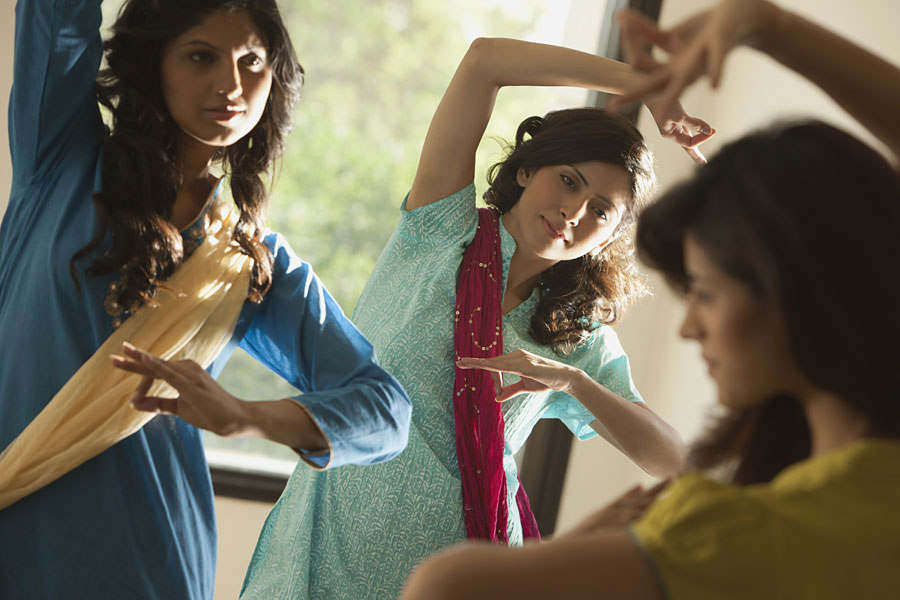
Practical:
- In teentaal: Two Thaat, One Paranjudi Aamad, One Rangamanch Pranam, Four simple Todas, Two Paran, Four Chakradaar Paran, One Kavit, One Chakradar Tihai
- In Tatkar : Adhi, Barabar, Dugun, Chaugun, Athgun ending with Tihai. Tatkar Baant ending with proper tihai in Teentaal.
- Gat Nikas: Mor-Mukut, Ghunghat, Bansuri.
- Gat Bhav:Panihari: Ability to show all mudras used in Gat-Bhav
- Ability to recite all the Todas and Bol on hands.
- In Jhaptaal: One Thaat, One Aamad, One Tihai, Two Todas, One Chakradaar Toda, One Paran
Praveshika Purna
Theory:
- Brief history of Kathak dance.
- Define: Aamad, Toda, Tukda, Tatkar, Paran, Chakradar, Kavit, Tihai, Anga, Pratyanga, Upanga, Gat-Bhav, Hasta-Mudra
- Define Folk Dance. Names of any five Indian folk dances.
Names of all seven Indian classical dance styles and their states.
- Asanyukta-hasta-mudra: Definition and usages of 28 mudras.
- Life story of a renowned Kathak dancer and names of any well known tabla players
- Ability to write notations of an amad, toda, teehai, paran, kavitt in teetotal and jhaptal
Write notations of thekas in Dadra and Keharwa Taal
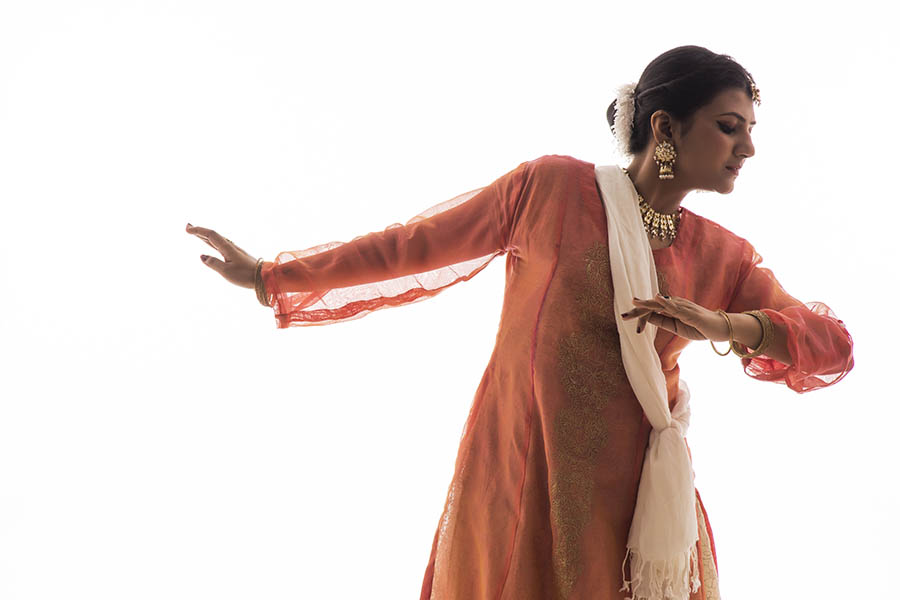
Madhyama Pratham
(Third Year)
Total: 200, Min: 70
Theory: 75, Min: 26, Practical: 125, Min: 44
Theory:
- Knowledge of all the definitions from all past levels.
- Nartan variations: Nritya, Natya and Nritt.
- Only Definition of Lasya and Tandav dance forms.
- As per Abhinay Darpan: neck (4) and head movements (9) and Samyukta mudras.
- Definitions of Folk dances and modern dances.
- Biography: Pandit Kalika Prasad, Pandit Bindadin Maharaj, Pandit Harihar Prasad, Pandit Hanuman Prasad.
- Be able to write all compositions of Teentaal, Jhaptaal, Ektaal , in Bhatkhande notations.
- Be able to narrate/write the story of Gat-bhav.
- Introduction of Sant Kavi SoorDas and Mira Bai.
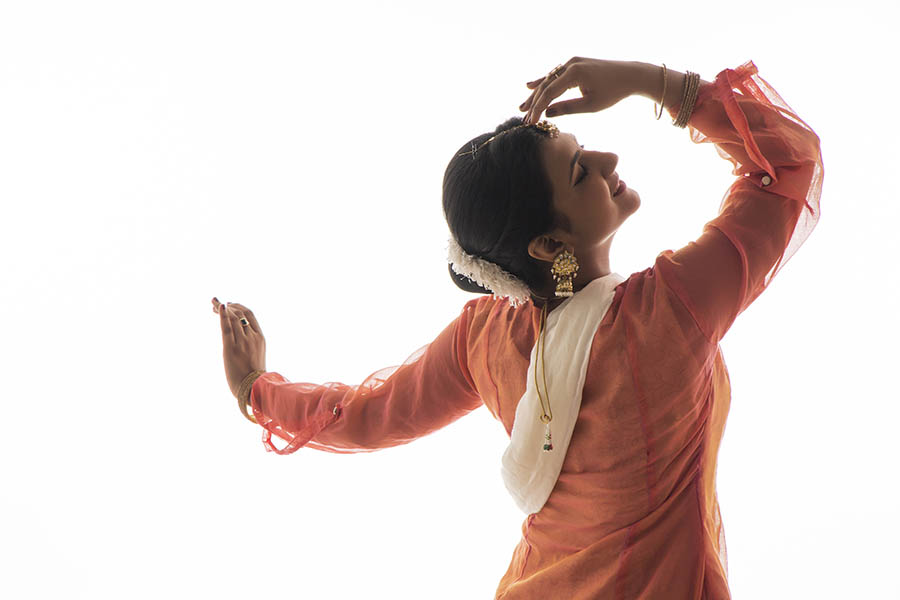
Practical:
- In Teentaal: Guruvandana, Thaat ( 3 differet poses), Aamad , Chakkardar Tore, Chakkardar Paran, Kavitt
- In Tatkaar: Barabar, Dugun, Tigun, Chaugun, Aathgun, explanation of baat
- In Jhaptaal: Thaat, paran-amad, salami, tode, 2 chakardar tode, 2 paran, 2 chakardar paran, 1 Kavitt, 3 Tihayee, tatlar in barabar, Digun chaugun end with Tihayee
- In Ektaal: Chakkradar Paran, Tihayee, Tatkaar in different lay, tihai
- Gat in Teentaal:
Gat Nikas – Jhoomar (Mangteeka), Kalayee,
Mataki holding in 3 different ways.
Gatbhav: Makhan Chori
Madhyama Purna (Senior Diploma)
Total: 250, Min: 90
Theory: 100, Min: 35, Practical: 150, Min:53
Theory:
1. History of Kathak Dance. Knowledge of Temple tradition and Darbaar / Court tradition of Kathak dance.
2. Detailed knowledge of Jaipur, Lucknow and Banaras Gharana
3. Definition and usages of nine types of eyebrow movements as per ‘Abhinaya Darpan’.
4.Definition and types of Tandav and Lasya.
5. Ability to write in diffeerent laya of teetotal: Aadhi(0.5), Pauni(0.75), Kuwadi(1.25), Aadi (1.5), Barabar(equal), Biadi(1.75).
6 (a). Define and elaborate ‘Abhinaya’.
(b). Define and elaborate 4 types of Abhinaya, namely
7. Write definition and usages of the following Sanyukta Hasta Mudras: Chakra, Samputa, Pash, Keelaka, Matsya, Koorma, Warah, Garud, Nagbandh, Khatwa and Bheruda.
8. Life story of the following Kathak maestros and their contribution to Kathak:
(a) Pandit Achchan Maharaj
(b) Pandit Shambhu Maharaj
(c) Pandit Lachchu Maharaj
(d) Pandit Narayan Prasad
(e) Pandit Jaylaal
9. Ability to write the notations of all the todas in Teental, Rupak and Dhamar.
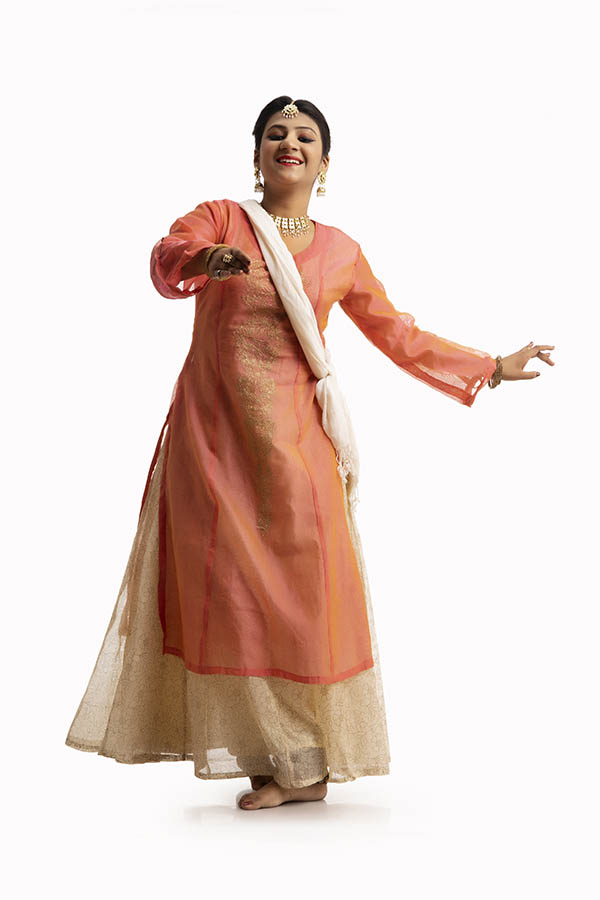
Practical:
1. Advance presentation of Teental (different than the one presented in Madhyama Pratham).
2. In Rupak taal (7 beats): One That, one Aamad, two Tihai, three Paran, one Chakradar Paran, four Todas, one Kavit Paran; Thah and Dugun of Tatkar.
3. In Dhamar Taal (14 beats): One That, one Aamad, two Tihai, four Paran, two Chakradar Paran, two Kavit Paran; Thah and Dugun of Tatkar.
4. Ability to recite all the Bols in Teental, Rupak and Dhamar .
5.Gat-nikas advance presentation- simple Gat, Bansuri, Matki, Ghoonghat, Kalai, Rukhsar, Chhed-Chad and Anchal.
6.Besides all the Gat-Bhav learned in the previous years, perform ‘Kaliya-daman’.
7.An expression item / to perform Bhav on any ‘Pad’ or Thumri.
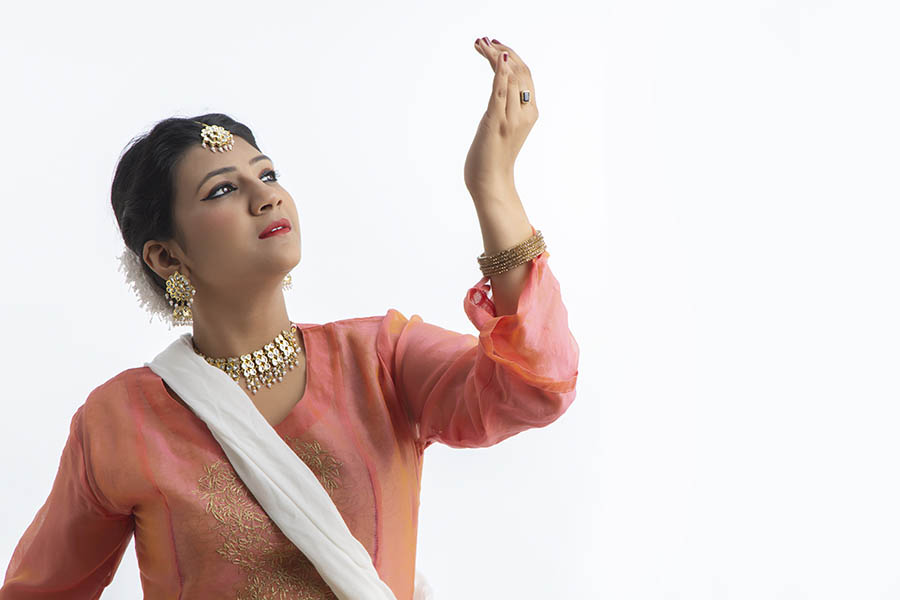
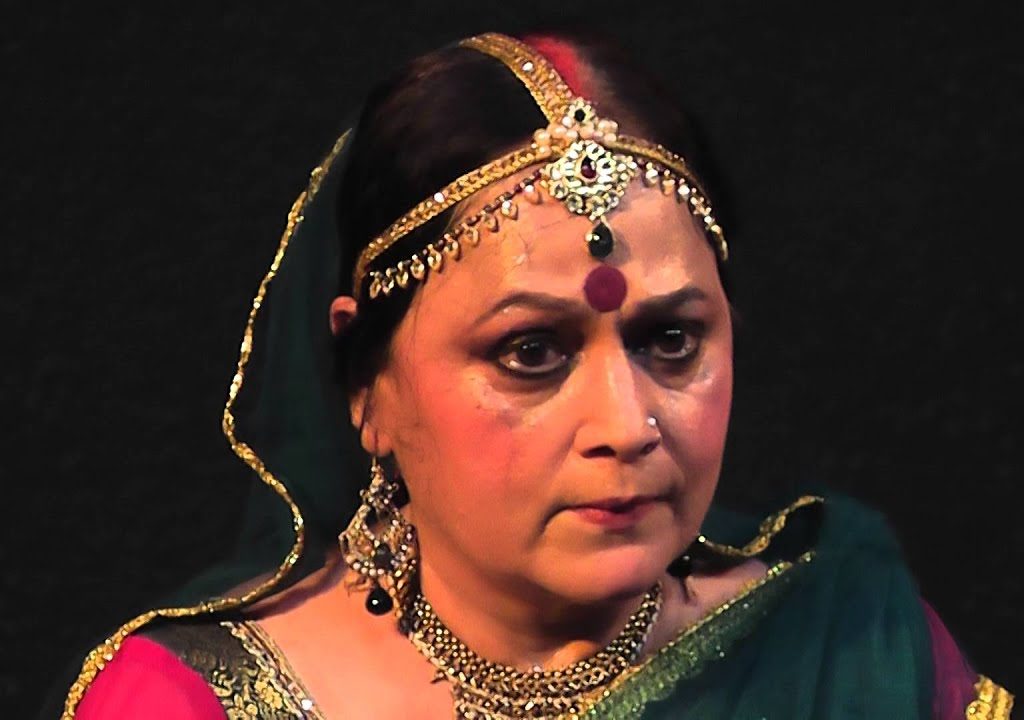
Theory Paper 2
1.Evolution of Ras; definitions of Sthayi Bhav, Bhav, Vibhav, Anubhav and Vyabhichari Bhav.
2.Knowledge of the following words or concepts traditionally used in Kathak:Tipalli, Kavit, Farmaishi Paran, Kamali Paran, Bedum Tihai, Tribhang, Sudhang, Lang-dant, Anulom-Pratilom, Bhramari, Nyas-Vinyas.
3.Definitions of the following types of Indian Classical vocal compositions used in Kathak:Asthapadi, Drupad, Thumri, Chaturang, Tirwat, Trana, Chaiti, Kajari, Hori
4.Nawab Wajid Ali Shah’s and Raigadh Maharaj Chakradhar Sinha’s contribution to Kathak.
5.Write notations of Aamad, Tihai, Toda, Chakradar Paran and Kavit in the following Taal: Raas Taal (13 Matra), Dhamaar (14 Matra), Gajazhampa(15) &Pancham Sawari (15 Matra).
6.Life Stories of Nataraj Gopi Krishna, Sitara Devi, Pandit Durgalal and Guru Sundarlal Gangani.
7.Essay writing: Raas and Kathak and the relevance and importance of Thumari in Kathak.
8. Merits and demerits of a Dancer .
Visharad Pratham (B.A Degree)
Total Marks: 400, Min: 140
Theory:150 , Min: 52, Practical: 250, Min: 88
Theory – Two question papers 75 marks each; minimum of 26 in each paper.
Theory Paper 1
- Evolution of ‘Natya’ as per ‘Bharat’. Purpose and application of ‘Natya’.
- Definition of Nav-Ras.
- Four types of Nayak Bhed – Dheeroddhatta, Dhirodaatta, Dheer-lalit and Dheer-Prashant.
- Knowledge of four Nayikas
- Knowledge of Matsya, Kurma, Warah, and Narsimha Avatar from Dashawtar; the stories and Mudras of these Avatars.
- Definition and knowledge of the 10 Pran of Taal.
- Information of Bharatnatyam, Manipuri and Kathakali dance styles, their traditional costumes, jewellary and accompanying instruments.
- Write notations of Aamad, Bedum Tihai, Farmaishi Paran, Chakradar Paran, Tipalli and Kavit in each of the following Taals: Teental, Zhaptal and Dhamar.
- Essays: Importance of Guru-Shishya Parampara(tradition) and merits of a good disciples and his duties towards his Guru.
Practical
- Saraswati Vandana
- Besides Teentaal, advanced presentation of Jhapatal.
- In tals, Pancham Savari (15), Dhamar (14), Ada Chautal (14) :Ability to present That, Aamad, two Todas, one Paran and one Kavit in the following Taals: with Thah, dugun of Theka in Tatkar.
- Gat-nikas and bhav: Holi, Ghoonghat, Kaliya Bardan
- Thumri or Bhajan (Bhav Presentation)
- One Tarana or Tirwat in any Taal.
- Ability to recite all the compositions in all the Taal.
- Ability to perform tals on harmonium and tabla
- Tatkar Ladi (other than learnt in the previous years )in Teental or Dhamar.
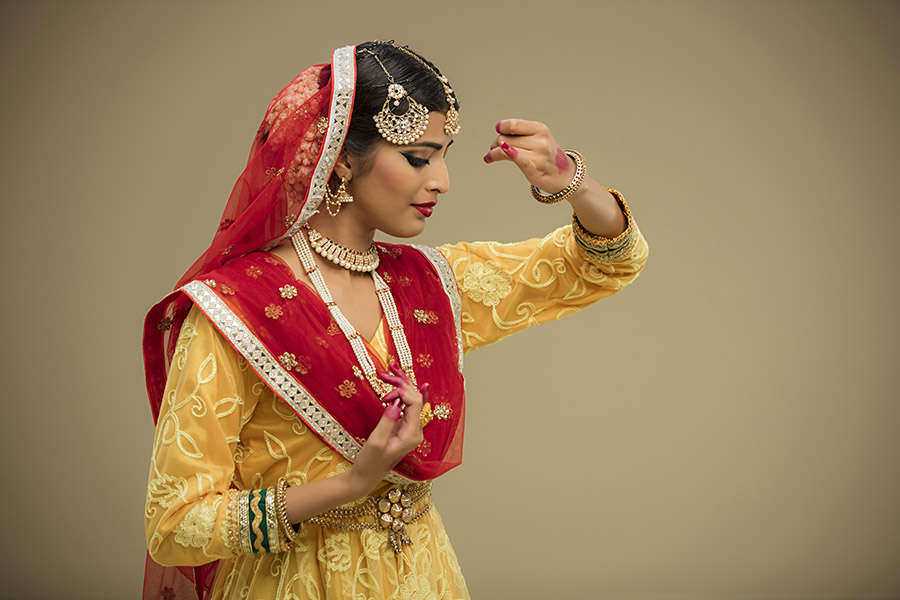

- Ability to show the Hasta-mudras of following characters as per Abhinay Darpan.
a. Gods and Goddeses: Brahma, Vishnu, Saraswati, Parvati, Lakshmi, Indra, Agni, Yama, Warun and Wayu.
b. Dashaawtar Mudras of: Matsya, Kurma, Waraah, Narsimha, Waman, Parshuram, Ram, Balram, Krishna and Kalanki.
2. References of dance in Ancient Literature.
3. Life Stories of :
a. Guru Sundar Prasad,
b. Guru Mohanrao Kalyanpurkar,
c. Maharaj Krishna Kumar &
d. Pandit Birju Maharaj
4. Definition and implementation of Lok-dharmi and Natya-Dharmi in Dance.
5. Essay : Popularity of Indian dance in foreign countries.
6. Essay :New techniques like : modern theaters, lights, stage settings, sound effects, cyclirama, back projections etc. used in presenting dance today.
7. Importance and position of Kavittas and Thumari in Kathak.
8. Connection of vocal – instrmental music, drawing-painting and scupting with Dance.
9. Ability to write notations of Aamad, Toda, Paran, Chakradar Toda, Farmaishi Paran, Parmelu in Matta-Taal (18 matra) and Raas Tal (13 Matra)
Visharad Purna (B.A Degree)
Total : 400, Min: 140
Theory: 150, Min: 52
Theory – Two question papers 75 marks each; minimum of 26 in each.
Practical: 250, Min: 88
Theory Paper 1
- Knowledge about acient events/incidences which were related to dance.
- Knowledge of verious Granthas written during the “ Madhya – Yuga” period.
- Detail knowledge of Navrasas.
- Detail knowledge of Nayika Bheda as per dharma, age, character, physique, and situation.
- Knowledge about other dance styles – Oddissi, Kuchipudi and Manipuri : presentation, musical accompaniment, costumes, jewellery
- Evolution of Laya and Tal and it’s importance in Kathak
- Comparitive study of Asamyukta and Samyukta Mudras as per Natya- Shastra and Abhinay-Darpan.
- Ability to write the notations of Aamad, Tihai, Toda, Paran in Choti Sawari and Shikhar tel
- Knowledge of Ramayan, Mahabharat, Bhagwat Puran and Geet Govind.

Practical
- Vishnu vandana – (with knowledge of Raag, Taal and meaning of the words)
2. Advance preparation in
a. Chhoti Sawari (15 matra)
b. Shikhar Taal (17 matra)
c. Matta-Taal (18 matra)
d. Raas-Taal (13 matra)
3. Ability to perform Teetaal, Shaptaal and Rupak on simple theka without support of padhant.
4. Ability to create short dance choreography on short stories.
5. Ability to present Baant, Ladi, Chalans with Vistar(expansion/more variations) in Tatakar.
5. Command over previous year’s Gat-Bhav with additional two Gat-bhav on
a. Kanchan-mrug till the sequence of Seeta-haran,
b. Kans-Vadh (Killing of Kans)
6. Ability ot perform various Sanchari bhav on Thumari and any Pada while sitting.
7. Ability to recite every rythmic composition of every taal that you are performing.
8. Presentation of any two (with information of Raag, taal and meaning of words)
a. Tirwat,
b. Tarana,
c. Ashta-padi
d. Chaturang,
e. Stuti
9. Ability to express all the Nav-rasas through facial expressions while sitting.
10. Presentation of a composition based on any story of Dashaawtar.
11. Ability to move, eyebrows and neck (bhrukuti and greeva) as per Teentaal nagama.
12. Ability to sing or play on Harmonium/keyboard
13. Ability to improvise and perform immediately on any story given by the examiner at the time of practical exam.
14. Abhinaya/Bhav presentation on Ashta-Nayikas
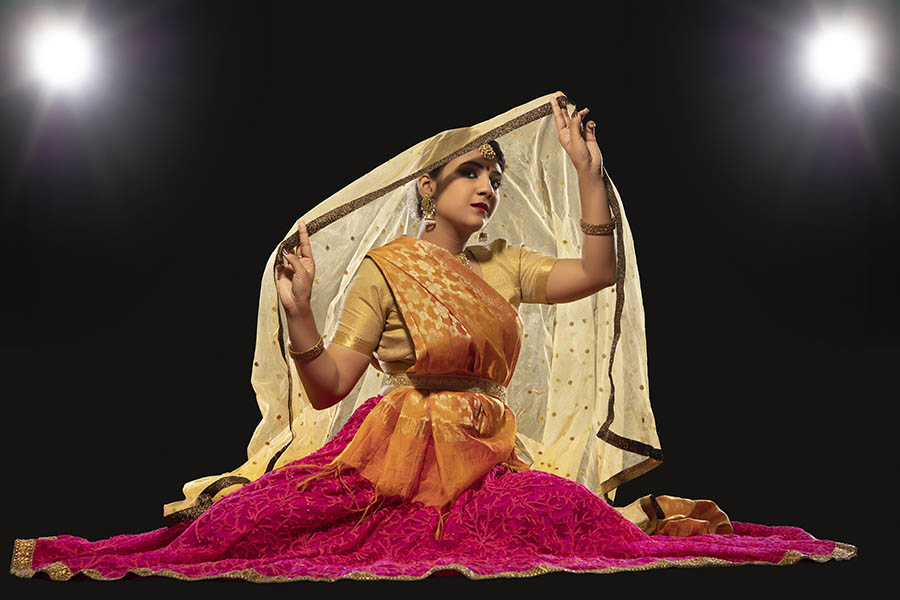
Alankar/ Kalaratna
Equivalent to an M.A degree in Kathak. Two stages: Pratham and Purna, final score will be based on performance in both exams.
